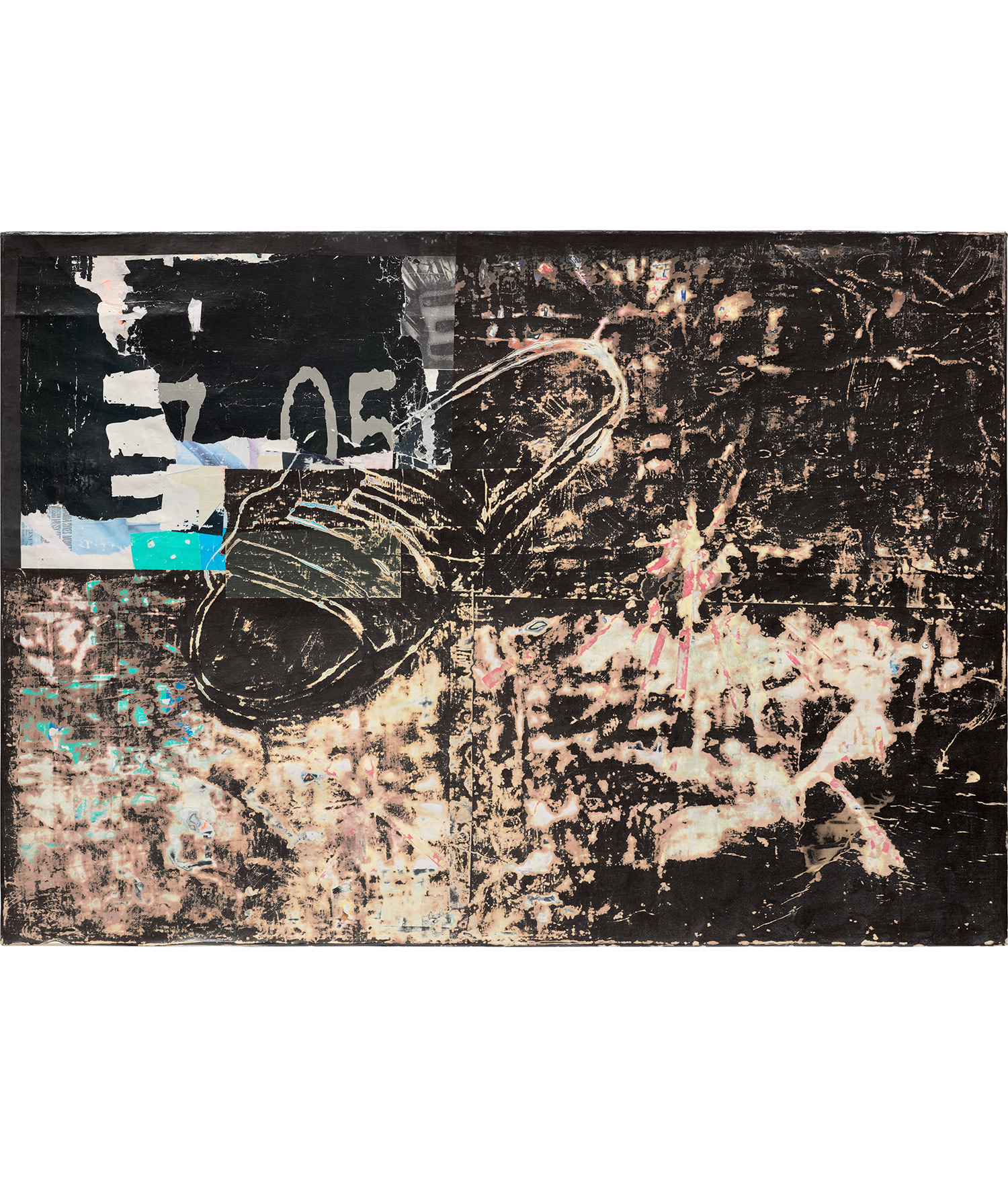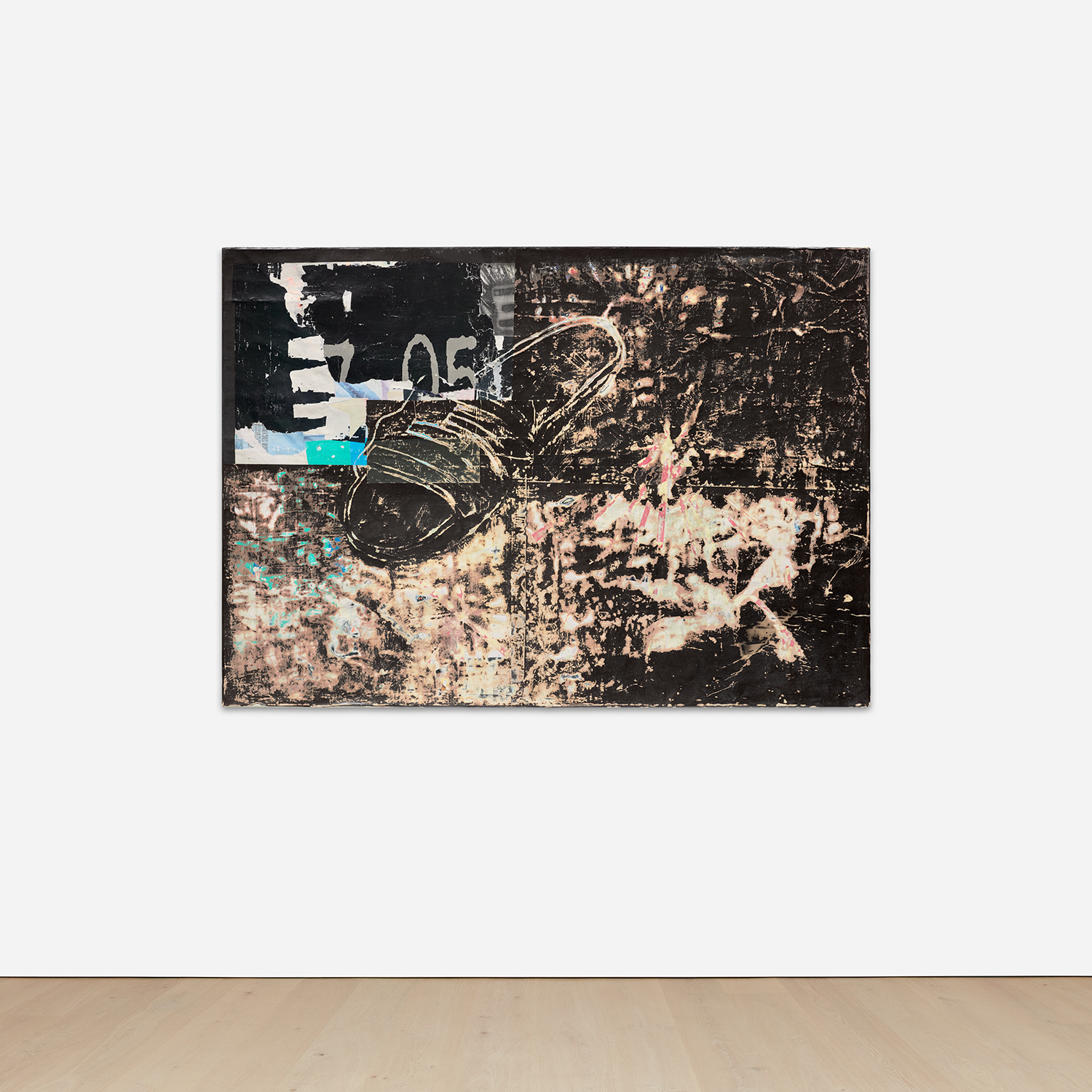



340
Mark Bradford
Starin' Through My Rear View
signed with the artist's initial, titled and dated "Starin' Through My Rear View m 2006" on the reverse
acrylic, paper collage and wax resin on canvas
44 7/8 x 63 1/4 in. (114 x 160.7 cm)
Executed in 2006.